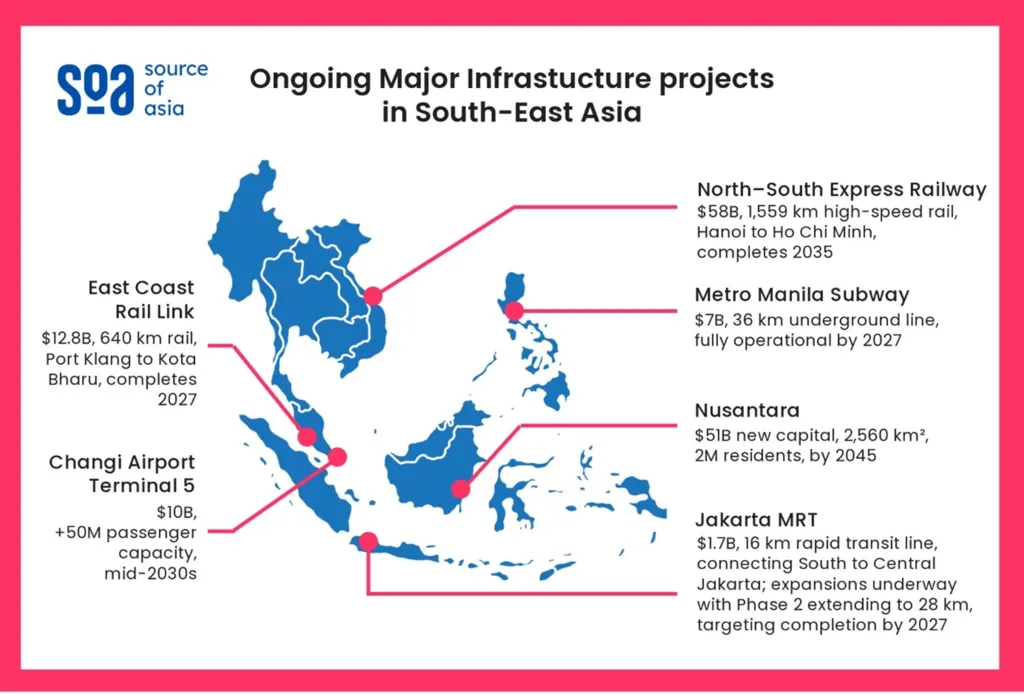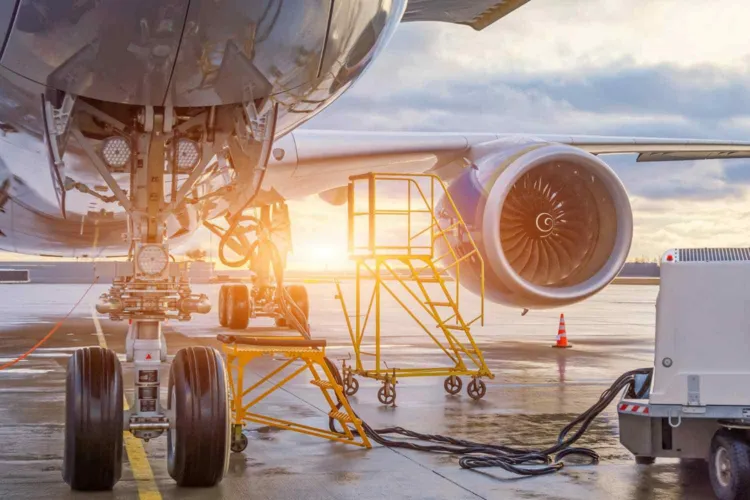Middle Eastern investors are redirecting more capital into Southeast Asia’s infrastructure market. The surge marks a strategic shift in how regional wealth funds deploy resources, aligning long-term growth goals with Asia’s expanding demand for modern energy, logistics, and digital networks. This Southeast Asia M&A Infrastructure Focus shows how sovereign-backed funding is becoming a core driver of cross-border development.
Middle Eastern Capital Finds New Ground in Southeast Asia M&A Infrastructure Focus
Middle East M&A activity surged by 154% year-to-date in 2025, signaling renewed momentum after years of volatility. Much of this growth comes from consolidation and new strategic investments across infrastructure, fintech, and technology sectors.
Leading the charge are sovereign wealth funds from Saudi Arabia, the UAE, and Qatar, which are now actively diversifying their portfolios. They’re targeting stable, asset-heavy industries with long-term returns—particularly renewable energy and transport. The Middle East 2025 CP&I Survey found that 75% of respondents expect higher capital project spending in the next two years. Saudi Arabia ranks as the top market for infrastructure investment, setting the tone for the wider region’s outbound investment strategies.
Read Also: Smart City Projects SEA in Focus Drive Unseen Urban Futures
Southeast Asia Becomes a Strategic Destination

In Southeast Asia, mergers and acquisitions (M&A) in core infrastructure surged in the second quarter of 2025, led by telecom and energy mega-deals. Thailand played a central role in Southeast Asia M&A infrastructure focus, with transformational acquisitions in both sectors accounting for nearly one-third of the total deal value in the quarter.
This rising momentum reflects regional consolidation, where local companies are strengthening their core operations, and inbound investors are seeing value in strategic partnerships. Analysts expect inbound M&A to strengthen further in the second half of 2025, especially in capital-intensive industries like renewable energy and logistics.
These sectors align closely with the diversification goals of Middle Eastern investors, making Southeast Asia a natural fit for their long-term infrastructure focus.
Sovereign Gateways and Project Guarantees Southeast Asia M&A Infrastructure Focus
A defining feature of the new investment wave is the use of sovereign-backed gateways and project guarantees. These tools reduce risk and make large-scale infrastructure projects more attractive to international capital. Middle Eastern sovereign wealth funds and government-linked vehicles have been pivotal in creating these investment frameworks.
By partnering with Southeast Asian governments and local conglomerates, they’re channeling capital into renewable energy grids, smart logistics systems, and digital infrastructure. These collaborations don’t just fund projects—they also transfer expertise, strengthen trade links, and enhance geopolitical cooperation between the Gulf and ASEAN regions.
Southeast Asia M&A Infrastructure Focus: Vision 2030 and Regional Transformation
Saudi Arabia’s Vision 2030 and the UAE’s industrial investment agenda are reshaping how capital moves globally. Both strategies emphasize global partnerships, sustainable investments, and technology-driven development.
Read Also: SEA AI-Trade Growth and the Infrastructure Advantage
Southeast Asia fits perfectly within these frameworks. The region’s rapid urbanization and infrastructure gaps present long-term opportunities for stable returns. Investments in mining, renewables, and digital infrastructure are now core parts of this partnership, blending economic growth with energy transition goals. This shift represents financial influence, innovation, and interregional collaboration.
A Growing Southeast Asia M&A Infrastructure Focus
The ongoing Southeast Asia M&A infrastructure focus highlights a new era of cooperation between Middle Eastern capital and Asian development. As sovereign investors deepen their exposure through project-backed investments, they’re shaping the future of infrastructure financing across the region.
For businesses and governments seeking to navigate this evolving landscape, Market Research Southeast Asia provides strategic insight, transaction advisory, and on-the-ground expertise. To explore how your organization can engage with this cross-border investment trend, contact Market Research Southeast Asia today.
FAQs:
1. Why are Middle Eastern investors focusing on Southeast Asian infrastructure?
They see stable, long-term returns in sectors like energy, logistics, and digital infrastructure, supported by economic growth and sovereign partnerships.
2. What sectors are attracting the most M&A deals in Southeast Asia?
Telecom, energy, renewable power, and logistics led recent strategic M&A activity.
3. How do sovereign-backed gateways help investors?
They reduce financial risk and provide government-backed guarantees for major projects.
4. Which Middle Eastern countries are leading these investments?
Saudi Arabia, the UAE, and Qatar are the primary investors through their sovereign wealth funds.
5. How can businesses engage with these cross-border opportunities?
Consulting firms like Market Research Southeast Asia can help companies plan, evaluate, and connect with Middle Eastern investors, specifically when talking about Southeast Asia M&A infrastructure focus.







